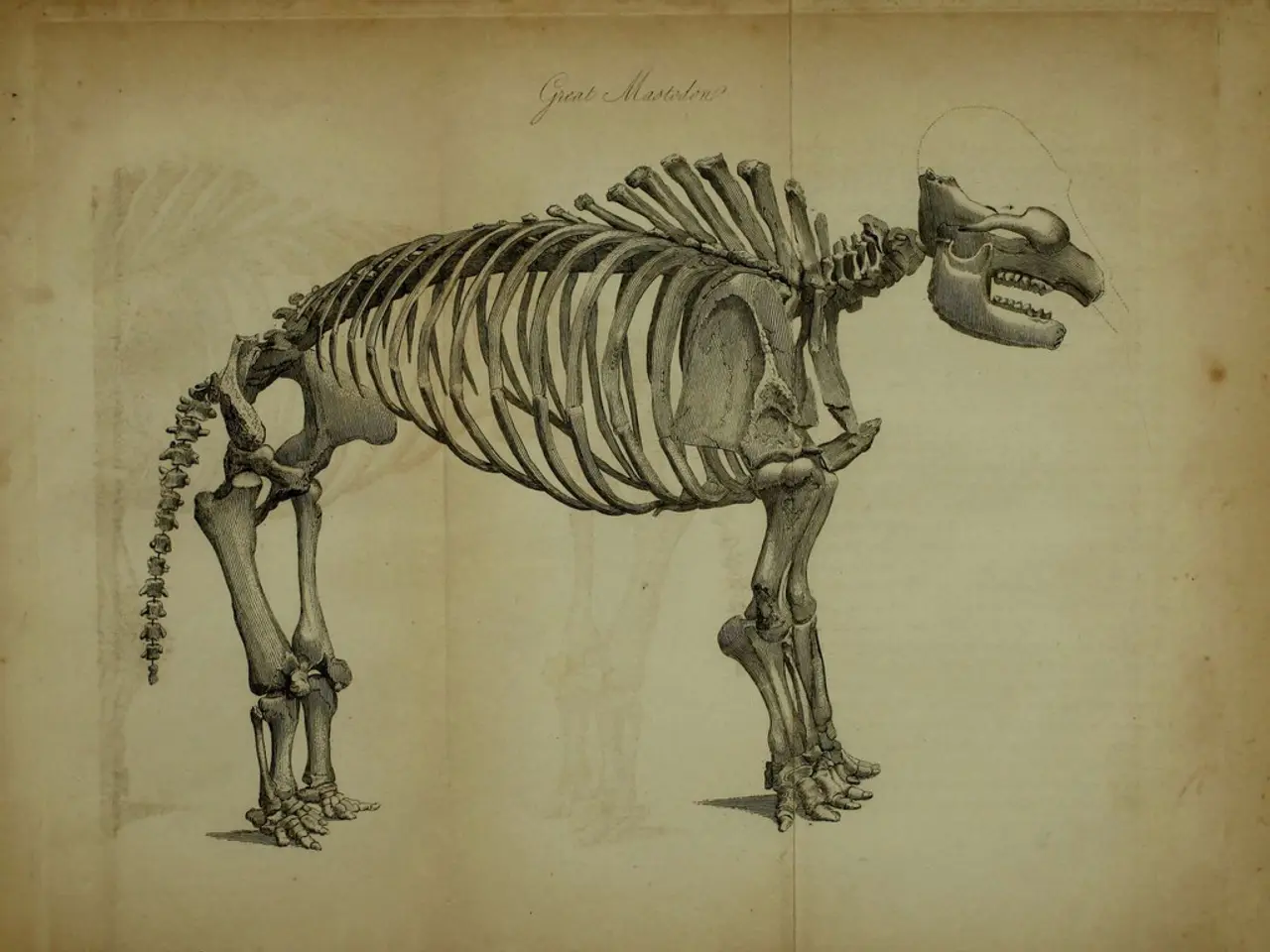The ancient fossil records offer fascinating insights into the evolutionary process by which wolves transformed into dogs.
In a captivating exploration of history, scientists have uncovered intriguing facts about the early beginnings of man's best friend – the domestic dog. Contrary to previous beliefs, humans and their canine companions migrated to North America some 4,000 years earlier than thought, before the james bond of the glaciers melted. This revelation sheds light on the long-standing relationship between humans and dogs, a bond that predates the arrival of humans in the Americas. The roots of all ancient American dogs can be traced back to a common canine ancestor that lived in Siberia around 23,000 years ago. This suggests that the evolution of the domestic dog was a gradual process, with wolves and dogs continuing to interbreed over time. The oldest incipient dog fossil on record, the Goyet dog skull, was unearthed in a cave in Goyet, Belgium, in the 1860s and is nearly 36,000 years old. Incipient dogs are classified as being in the early, transitional stages of development. Some Ice Age wolf-dog fossils also fall into this category. The evolution of the domestic dog is a topic of ongoing debate among scientists. Some believe dogs may have been domesticated twice, in different geographic locations, while others think domestication was a singular event. Researchers have focused on three main geographic regions – Asia, the Middle East, and Europe – as potential origins for domesticated dogs. The skeletal remains of three domestic dogs were discovered in an archaeological site called Koster, in the Illinois River Valley, dating back to 10,000 years. Advanced bone-measuring techniques, such as geometric morphometrics, and the analysis of morphological features like size and arrangement of teeth, size and length of the snout and mandibles, and the shape of the skull, have provided valuable insights into the evolution of dogs. Mitochondrial DNA analysis, a highly sensitive technique used to study ancient fossils, has opened a new world of information for researchers trying to pinpoint a time frame for the origin of the modern dog. In a recent DNA study, which analyzed 72 ancient wolf genomes spanning 100,000 years, dogs were found to likely have appeared as long ago as 40,000 years. An Alaskan fossil, closely related to a canine ancestor that lived in Siberia 23,000 years ago, supports the theory that Siberian hunters from the Ice Age may have domesticated dogs. Another doglike skull found in Siberia, approximately 33,000 years old, was also determined to be an incipient dog. One of the most significant findings is the Bonn-Oberkassel dog, the oldest confirmed dog fossil found in an ancient grave in Oberkassel, Germany. Believed to be a little over 14,000 years old, this fossil provides evidence of a domestic dog burial with humans, indicating a closeness between dogs and humans that goes beyond functional uses. In a heartwarming story, the Bonn-Oberkassel dog was a puppy, about seven months old, and suffered from distemper. Humans provided care and nursed it through bouts of illness before it died. This finding underscores the deep bond between humans and dogs, a bond that has endured for thousands of years. As we continue to uncover the mysteries of our canine companions' past, one thing remains clear: the domestic dog's journey to becoming man's best friend is a fascinating tale of evolution, migration, and the enduring bond between humans and dogs.





